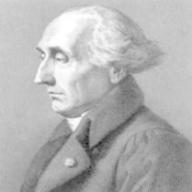太陽最出面個舊大氣層既粒子會吸收太陽中心emit出來既某d特定波長既光再re-emit in all direction
假設氣體粒子係穩定既
而一粒氣體粒子有無限多個energy level
咁一個absorbsion spectrum係咪有好多條lines?
但太陽咁高溫度
氣體粒子應該好唔穩定
並且隨時處於受激發狀態
好難話會absorb一粒等同於ground state去the first excited state既能量既光子架喎
absorbsion lines 咪隨時會冇左某啲dark line?
Solar spectrum
2011-04-16 2:29 am
回答 (2)
2011-04-16 11:50 am
✔ 最佳答案
The surface temperature of the sun (~6000K) is not enough to ionize hydrogen. So most hydrogen atoms will still be at the ground state. The ionization energy for hydrogen atom is ~13.6eV. The energy scale we are looking at on the surface of the sun is approximately give by圖片參考:http://imgcld.yimg.com/8/n/HA05726829/o/701104150078713873426790.jpg
where k_B is the Boltzmann constant (~8.62 x 10^-5 eV/K). So the thermal energy scale is small compare to all excitations of the atom.
In fact, we could even calculate exactly the population of energy levels. The energy spectrum of hydrogen is given by
圖片參考:http://imgcld.yimg.com/8/n/HA05726829/o/701104150078713873426791.jpg
where n=1,2,3,... labels the energy levels. The probability distribution of energy levels are given by the Fermi-Dirac statistics:
圖片參考:http://imgcld.yimg.com/8/n/HA05726829/o/701104150078713873426802.jpg
where the numerator 2n^2 counts the number of states at energy level n. For example, at n=1, we have two 1s state spin up and spin down. At n=2, we have 2s and 2p, spin up and down states that add up to 8. At n=3, we have 3s, 3p and 3d and spin that add up to 18.
At temperature 6000K, the Fermi energy is still approximately
圖片參考:http://imgcld.yimg.com/8/n/HA05726829/o/701104150078713873426813.jpg
So we could plug in the the equation and find the occupation probability p(n) at level n.
圖片參考:http://imgcld.yimg.com/8/n/HA05726829/o/701104150078713873426814.jpg
As you can see, most hydrogen are still at its ground state n=1. So the absorption spectrum is actually not that different than that in room temperature.
At the sun core though, temperature could be as high as ~1.5 x 10^7 K. This corresponds to the thermal energy scale ~1290 eV, which is much much greater than the ionization energy 13.6eV of hydrogen. This means most hydrogen atoms are ionized and electrons are not bounded to the atoms. This is called a plasma phase and does not have a discrete absorption spectrum.
2011-04-16 8:15 am
The most crucial point is the the outer atmosphere of the sun, which is at a temperature of around 6,000 K, is cool compared with the interior of the sun that could be of temperature up to billions of degrees.
An absorption spectrum indeed consists of a series of dark lines characterstic of the atoms of a certain element. This represents transitions of electrons between energy levels that are within the visible spectrum. The transition is not necessarily limited to the ground state to the first excited state.The following web-page gives a simple but good explanation on the production of absorption spectrum,
http://www.colorado.edu/physics/2000/quantumzone/fraunhofer.html
An absorption spectrum indeed consists of a series of dark lines characterstic of the atoms of a certain element. This represents transitions of electrons between energy levels that are within the visible spectrum. The transition is not necessarily limited to the ground state to the first excited state.The following web-page gives a simple but good explanation on the production of absorption spectrum,
http://www.colorado.edu/physics/2000/quantumzone/fraunhofer.html
收錄日期: 2021-04-29 17:39:17
原文連結 [永久失效]:
https://hk.answers.yahoo.com/question/index?qid=20110415000051KK00787

